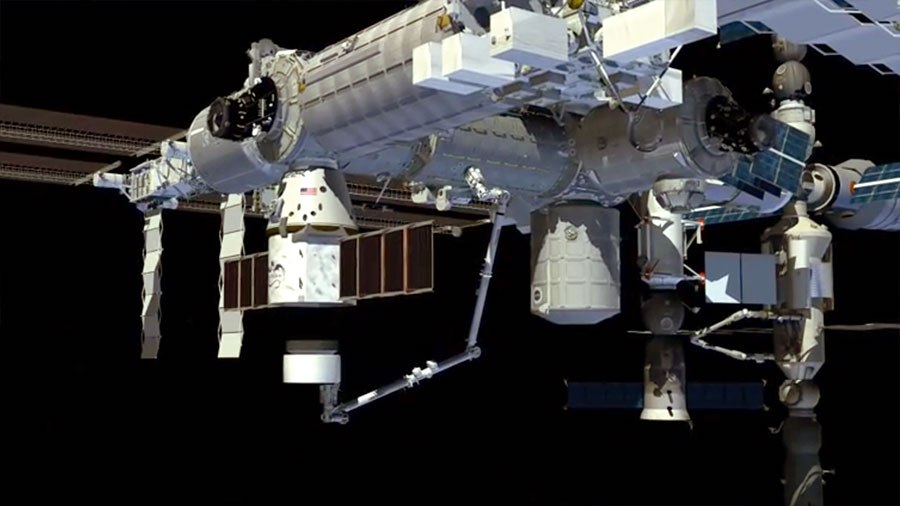 |
| In the words of esteemed space pirate Han Solo, "She may not look like much, but she's got it where it counts, kid." (Image courtesy nasa.gov.) |
The Bigelow Expandable Activities Module (B.E.A.M.), an inflatable habitat brought to the station during the last SpaceX Dragon cargo delivery mission, was successfully installed on the Tranquility module this morning. With E.S.A. astronaut Tim Peake on the controls, the Canadarm-2 robotic grappling arm boosted the B.E.A.M. from the Dragon module and connected it like a spacefaring Lego to the Tranquility.
| Artist's rendition of how to pimp your space ride. (Image courtesy nasa.tumblr.com.) |
Once expanded, the B.E.A.M. will be closely monitored for how it responds to temperature, radiation, and impacts from space debris...
| Can't have micro-meteorites joining the party inside. (Image courtesy nasa.tumblr.com.) |
...and barring issues with the inflation, will provide space for humans to work in - an important resource when building a shed in the backyard just isn't an option.
| Conceptual cross-section of the inflated B.E.A.M., which will require no extra gear to access. Astronauts can float right in. (Image courtesy nasa.tumblr.com.) |
You can read more on B.E.A.M. right here, thanks to NASA. Congratulations on a safe installation, station crew!
In other news, the station crew kept busy with biological science experiments, from examining skeletal muscle cells for warnings of micro-gravity muscle atrophy, to monitoring immune system stats and conducting cognitive experiments.
NASA astronauts Jeff Williams and Tim Kopra also chatted with the Today Show to discuss some of their daily space activities and how they differ from those on Earth (everything from having coffee to going for a jog has a unique protocol, in space!)
| They actually have to strap into a harness for any jogs faster than this. (Image courtesy nbcnews.com.) |
One of the astronauts' favorite activities in their spare time is, of course, staring at Earth and capturing the fascinating terrain from their unique vantage point. For us still stuck on this ball of dirt, we can enjoy the astronauts' imagery in the upcoming IMAX film, "A Beautiful Planet." Created by the director of the IMAX "Hubble 3D", this film showcases our amazing Earth in high-definition, immersive imagery.
The footage was shot over several months' worth of mission time last year, and marked the first time that 4K cameras were used aboard the ISS. According to PR Newswire, "A Beautiful Planet" will feature "lightning storms, the continents, volcanoes, coral reefs and bright city lights on Earth", as well as imagery of the elusively amazing Aurora Borealis (Northern Lights.) The film premieres in America on April 29th.
 |
| Watch our "pale blue dot" in high-def, full-color glory! And this bit is just the Bahamas! (Image courtesy Tim Peake.) |
Until then, how about some of this week's excellent images from NASA astronaut Jeff Williams?
 |
| The Suez Canal. |
 |
| The Himalayas (and space.) |
Williams also posted a tribute to Yuri Gagarin, the first man in space, who traveled skyward on April 12, 1961. We salute you, storied spaceman!
That's all for this week, space fans. We'll see you next Sunday with even more awesomeness from orbit. Watch this space!
 |
| Nice try, Dubai, but you're not the whole rest of the planet. (Image courtesy Tim Peake.) |

Nice to see your blog post which ensures all the nice features of image
ReplyDelete